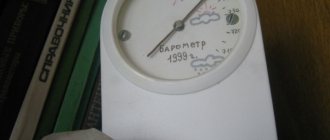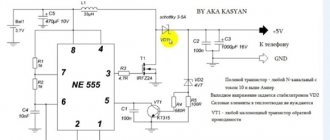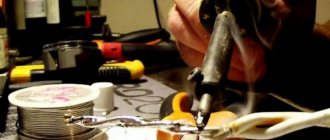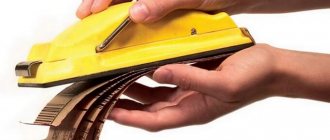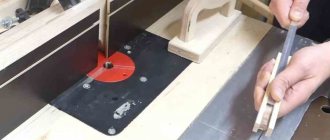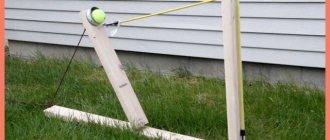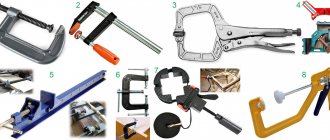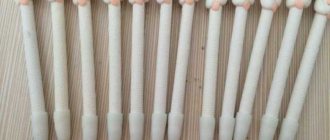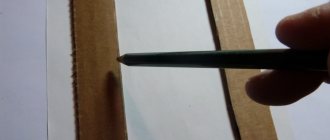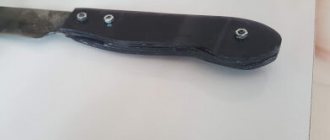Making grinder rollers with your own hands: drawings
Designing rollers for a grinding unit of this type is a serious step that requires care and precision.
One of the most important elements of a grinder is the main skating rink. It must be remembered that its dimensions must be larger than the dimensions of the remaining rollers. It is no coincidence that the leading roller has similar geometric parameters. Such dimensions allow you to avoid unwanted jerk that occurs during the starting torque
It is also important to understand that for the manufacture of this structural element, in no case should you use materials that have a large mass. Such materials include:
- steel;
- cast iron.
Before you start creating the rollers, you need to prepare the appropriate drawings with dimensions. A do-it-yourself belt grinder should have light and convenient rollers of small dimensions. As a rule, this is quite enough to carry out simple sanding work.
When assembling the grinder yourself, it is important to place the rollers perpendicular to each other to avoid belt distortions. To reduce the weight of the drive roller, a steel part with a cavity can be designed
There are special reference books that allow you to carry out the calculations necessary for this procedure.
To reduce the weight of the drive roller, a steel part with a cavity can be designed. There are special reference books that allow you to carry out the calculations necessary for this procedure.
The second option, which is most often used by home craftsmen, is the use of duralumin. This material is lightweight and ideal for this purpose. It contains impurities of copper and magnesium, which provide increased strength to the alloy. To assemble the grinder, it is customary to use duralumin grade D16 and higher.
How to make grinder rollers with your own hands? Experts recommend making a groove on the pulley located at the end. Its dimensions are selected taking into account the size of the abrasive belt that will be used in the machine. This measure is aimed at preventing the tape from falling off during equipment operation. It is advisable to do the same manipulation with the remaining rollers.
The degree of roughness of the rollers is very important. The surface of the rollers may have different levels of roughness. When assembling a grinder, it is recommended to use rollers in which this indicator ranges from 1.25 to 2.5. A table containing information on the degree of roughness of parts can be easily found on the Internet. The pulley for the grinder is mounted on the equipment with your own hands using bearing units.
Duralumin is often used to make grinder rollers.
In this case, closed type bearings are used, which have a static outer ring and are classified as self-aligning. Installing such elements eliminates the possibility of abrasive or any other foreign particles getting onto the roller shaft.
When choosing bearings, it is necessary to take into account their load-bearing parameters. These indicators determine how much load the part can withstand. The higher the unit speed, the more reliable the bearings should be. During work, it is not recommended to deviate from the dimensional drawings. A belt grinder made in accordance with the scheme will be characterized by higher efficiency, as well as a long service life.
How to fix the video in the device? The easiest way to secure the roller at home is to use standard cotter pins. Another fastening option is to use a collar (at one end of the axle).
Making an aluminum part
Making a metal pulley is more difficult than its plywood counterpart, but the reliability of such a part will be much higher. We provide detailed step-by-step instructions for making an aluminum pulley. To produce this part, we need a piece of aluminum and a device for melting it down.
- We prepare a mold from polystyrene foam. Before you do this, decide on the required dimensions for your pulley.
- We insert the mold into the sand so that the top piece is not covered with it.
- We smelt aluminum. It is best to do this in a special melting furnace.
- Molten aluminum is poured into the mold.
- We mount the faceplate and the smelted part. To do this, you need to drill holes in the workpiece and fasten the elements using self-tapping screws.
- We grind our detail. This can be done using a grinder.
- We make a hole in our pulley with a drill.
It should be noted that making a metal pulley requires certain skills and resources. To produce it yourself, you will have to spend a lot more time and energy, but such costs will be recouped by the long service life of such a part. Before smelting, you must also make sure that your aluminum has sufficient strength and is suitable for its intended function.
When making any homemade device using a belt drive, you often encounter the problem of a missing pulley of the required diameter. Finding it on the market or through friends takes a lot of time, and it is not yet a fact that it will be found. And not everyone has a familiar turner. In most cases, I solve this problem on my own.
How to use homemade machines and tools for your home workshop
The use of homemade machines and devices for the home workshop is aimed at solving several problems:
- Simplifying the metal processing process. When creating household items, a metal cutter or press is often required.
- Improving wood processing. Even to build a small shed or make a wooden shelf for your home, you need a power saw and other woodworking tools.
DIY lathe
Buying a ready-made tool is quite expensive, so the use of homemade machines and devices for the garage is becoming more and more relevant every day. Among the most common options for home tools are:
- carpentry workbench;
- device for quickly sharpening knives;
- device for sharpening metal drills;
- drilling machines;
- press;
- cutting disc machines.
Self-assembled drilling machine
Here are a few photos of do-it-yourself tools and devices from “homemade” people:
1 of 4
Drilling machine from improvised tools
Tool for bending profile pipes Cold forging machine
Blade sharpening tool
What metal is the pulley made of?
To understand what material a pulley should be made of, you need to understand its purpose.
A pulley is a friction wheel designed to transmit torque from a motor to a rotating shaft through a rope or belt. The transmission of motion can be either long or short. And also - with different efforts. The load can be constant, or it can be dynamically changing.
It follows from this that pulleys should be made of cast iron or steel. As a rule, ordinary 40 steel is suitable. These metals have high wear resistance and increased strength.
The manufacture of pulleys according to drawings is carried out according to the following scheme:
- cutting a workpiece on a lathe
- end processing (trimming)
- cutting a hole in the center of the workpiece
- boring the central hole to the required diameter
- grooving
- thread cutting
MICRON LLC performs turning work on the manufacture of custom-made pulleys. For more complete information or to place an order, you can contact the company’s specialists.
For the bicycle suspension system, I needed to make several blocks. I didn’t have blanks of a suitable diameter lying around anywhere, so I turned my attention to plywood.
We cut out several approximately identical squares - in pairs for each block (but it is better to use thicker plywood).
We drill holes in the center of each of them (again, approximately) for the axle.
We glue the squares in pairs to make two blocks, which we tighten with a screw through the central holes. Tightened nuts with washers will act as a clamp, tightening the workpiece until the glue dries.
We clamp the resulting column in a vice. And grind the corners, turning the square into an octagon. I used a sander for this, but just a file or even coarse sandpaper stretched over a block will do.
We clamp the resulting part into the drill chuck and, placing it on rough sandpaper, give it the shape of a cylinder.
After this, the plywood block should be put aside for a day so that the glue sets, because... further manipulations will take place at the adhesive joint.
For further work we will need both hands, so it is advisable to firmly secure the drill to the workbench (I pulled it to the stool)). The workpiece is clamped into the chuck, the drill is turned on..
First, mark the middle of the workpiece with a pencil (to differentiate the two blocks). Then, using a round file, simply applying it to the part, we cut through the pulley groove to the required depth. The file is applied directly to the glue seam (the middle of the workpiece of one block), so you should wait for the glue to dry.
Having finished grinding the second groove, with a flat, or better yet, diamond-shaped file, we narrow the side parts of the pulleys, making them diamond-shaped - when viewed from the side - this reduces friction against the block body during rotation.
Since the blocks were not glued together in the middle, when we unscrew the screw, we will have two neat identical pulleys in our hands.
The pulley is one of the most important spare parts for both drilling and lathe machines. It is a part whose purpose is to regulate the speed and power of the engine. Of course, factory pulleys have a high degree of reliability and are designed for your machine, to which they fit perfectly.
But over time, the pulley, like many other parts, fails and requires replacement. In this article we will tell you how to make a pulley with your own hands. A high-quality hand-made part may not be inferior in reliability to factory-made analogues.
Read also: Welding with flux-cored wire in shielding gases
There are several views on making pulleys for machine tools at home. Most of the debate is about the material from which this part should be made. Experts say that making a pulley out of wood is a bad idea. The fact is that during operation of the machine, the pulley is subjected to quite serious thermal and physical stress. A wooden part in such conditions will not work for too long.
Pulleys made of metal perform best in the harsh conditions of everyday work, but their manufacture requires special equipment and high lathe skills. Average in quality and complexity of creation (compared to metal and wood) is a homemade product made from plywood. This part can be used both when repairing a factory machine and in the process of creating your own machine.
Making a product at home
There are several ways to make a pulley with your own hands, and we will tell you some of them.
The easiest way to make it at home is using a lathe. You need to select a suitable workpiece and simply turn the part to size.
For the second manufacturing method, you will need plywood with a thickness of at least 20 mm, a hand router and jigsaw, and a drill.
First you need to make a disk of the required diameter from plywood. Using a compass, draw a circle and make a hole in the center of it. Next, using a jigsaw, we cut out the disk with a margin of 2-3 mm from the line.
In order for the disc to have a perfect round shape, we clamp it into the drill through the central hole using a bolt and nut and sand it with sandpaper, processing all the irregularities.
The next step will be to form a seat for the belt. To do this we use a hand router. We fix the disk on the workbench using self-tapping screws and, having selected a suitable cutter, select a groove for the belt. So, the pulley is ready. You will need to measure the seat diameter of the pulley on the motor axle and drill the required hole.
A homemade pulley is attached to the engine axis using a flange.
If you do not have a lathe at hand, you can order this part from a familiar turner, but the driven pulley for a walk-behind tractor is of impressive size, and most often it is very difficult to find a workpiece of this diameter for turning. Therefore, we recommend making it yourself and ordering a flange.
Lathe device
It is impossible to make a lathe with your own hands without knowing its structure, so below we present its main parts:
- Drive unit. The basis of the mechanism generates power. For a low-power machine, a drive from a drill or washing machine is suitable;
- Bed. A steel corner or a wooden frame is suitable for manufacturing; this is a kind of load-bearing frame, so it must be strong to withstand vibrations;
- Tailstock. It is made by welding a corner to an iron plate. It is needed for fixation during processing of the manufactured device;
- Headstock. Installed on a movable frame, similar to a tailstock;
- Caliper. Acts as a support for the working part.
The rotational torque is transmitted by the engine to the working part using the following options:
The chain one is more expensive, it is more bulky, but it lasts a long time. In terms of its advantages and disadvantages, the friction one occupies a middle position. It is worth noting the fact that photos of a lathe with different gears are available on the Internet, and you can easily study them in detail.
The support is an extremely important part of the machine. It regulates both the amount of effort expended during work and the quality of the part.
Pulley concept
It is designed to transmit torque from the drive shaft to the driven shaft. To operate such a drive, both shafts are placed in parallel. A flat wheel is put on and secured to each shaft; they are placed in the same plane. The wheels are connected by an endless flexible drive belt. When the drive pulley rotates, the friction force causes the belt to move, covering part of its surface. This motion is transferred to the driven pulley, causing it to rotate.
Belt drives are common among household appliances, mechanisms of low- and medium-power machine tools, and in various internal combustion engines.
It has the following advantages:
- simple device;
- the ability to transmit significant power, modern V-belt pairs transmit up to 400 kW;
- high rotation speed, up to 50 m/s;
- smooth and quiet running;
- damping of vibrations and jerks of the drive shaft during rotation transmission;
- slippage under overloads acts as a safety mechanism.
The pulley itself is a disk on a shaft. It consists of two main parts: the rim and the hub. The rim is the outer part of the part. It engages with the belt and, depending on the type of drive, can be flat or have a recess in the shape of the belt. The side projections above the rim are called cheeks. They keep the belt from slipping. If the drive is wedge, then the cheeks are made inclined; they have an additional function - they increase the engagement area.
If a gear drive is used, then teeth of the appropriate shape are made on the surface of the rim.
If several streams are used in parallel, several grooves are made on the rim.
The hub is the inner part of the pulley. It has a hole for mounting on the shaft. Often the rim and hub are cast, turned, or milled as a single piece.
To reduce the weight of the product, voids are left in the body of the pulley, forming spokes. When made from wood, the presence of knitting needles was determined by the manufacturing technology.
To ensure the interchangeability of pulleys, their standard sizes, technological requirements, and markings are standardized. They are described in GOST 20889-94. “Pulleys for driving V-belts” and in GOST R 50641-94 (ISO 4183-89).
Standard markings include the following parameters:
- number of streams;
- profile of the drive belt used;
- diameter (calculated by cord);
- sleeve designation.
Thus, the marking 8 SPC 500 indicates an eight-lane pulley for an SPC profile with a diameter of 500 mm.
The rules for depicting pulleys in the drawing have also been standardized. The drawing must be constructed so that the product can be manufactured to exactly the same shape and size.
see also
Comments 38
It’s more elegant - you can drill holes at either end and in the corners of the letter “H”, before cutting, with a small drill. Is it not allowed to use thread locker there?
Is it not allowed to use thread locker there?
This is not a bad idea! Because The main problem is that the tendrils bend differently after cutting, because cutting identically is not possible. In case of drilling it must be identical))
The latch is unsafe, who understands how it will behave. After all, there are constantly shock-pulling overloads and not small ones.
It turned out fine. It is more elegant only on the press with a mandrel.
... and it’s better not to cut your hair...
These lock washers come complete with control rods, but the original Honda ones are enough for a couple of replacements, especially if the rack was removed, it is more convenient to bend the washer on the removed one than when it is on the car
They happen, but occasionally, sometimes even with unique ones...
Today, almost all brands of cars do not need this washer. Everything came from the “French”... Just tighten it with the required tightening torque, and that’s it...
A friend from the dromoforum once wrote from the news. The dude, after the service, (on a Honda), went somewhere. There was an accident along the way, apparently with fatalities, the car lost control at speed and flew into a ditch. With all the consequences. Later it turned out that at the service center the rod was tightened with a torque without installing the lock washer; on the way, the rod was unscrewed and the wheel turned against the direction of travel.
I had the option of the finger sticking out at the ball tip. Thank God at low speed. The feelings are still the same)))
A friend from the dromoforum once wrote from the news. The dude, after the service, (on a Honda), went somewhere. There was an accident along the way, apparently with fatalities, the car lost control at speed and flew into a ditch. With all the consequences. Later it turned out that at the service center the rod was tightened with a torque without installing the lock washer; on the way, the rod was unscrewed and the wheel turned against the direction of travel.
The wheel cannot turn against the movement when rotating. It tends to rotate along the axis of motion of the car. In addition, the process of self-unscrewing the control rod does not occur simultaneously. But, if the process has begun, then this inevitably affects the alignment of the wheels. That any driver will obviously see. The maneuverability of the car, extraneous knocks, etc. will change. In the end, the steering wheel spoke will deviate from the horizontal position at an angle noticeable to any driver. So, it looks like a fairy tale...
Source: www.drive2.ru
Rules for the care and operation of the pulley on the engine
For long and stable operation of the drive pulley, you should remember some rules for its care and use:
- Do not forget to regularly clean the pulley guards from foreign particles, dust and dirt. This will protect the part from getting dirt inside;
- check the fastening of the pulley on the engine axis. At the slightest loosening of the fasteners during vibration, the part will wobble, which will lead to serious damage and wear of the shaft;
- If serious chips, cracks and scratches appear on the surface of the part, do not delay replacing it. After all, a pulley failure during operation can have quite serious consequences;
- Protect the walk-behind tractor from excess moisture and do not store it in damp conditions. This can lead to severe corrosion and, consequently, to pulley failure.
Keeping parts in proper condition
For long-term service of pulleys on a walk-behind tractor, you must follow some simple rules:
- promptly check the strength of the seat fastening on the engine axis to prevent the part from becoming loose and failing;
- do not forget to check the protective covers that protect the part from dirt and large objects;
- check the belt tension to avoid slipping;
- visually inspect this unit to identify chips, cracks, etc.;
- observe the necessary safety precautions.
Read also: Malfunction of the charger for the screwdriver
A homemade product will serve you for a very long time without needing repair. As the service life expires, the part can be remanufactured.
The idea arose to make it out of plywood. I thought it was temporary, I’ll find a real one and replace it. But then it became clear that there was no need for this. It has been working flawlessly for me for 7 years now, no worse than any metal one.
The machine turned out great.
General design and structure of a homemade unit
When designing a homemade lathe for turning, you can consider two design options: with an electric drive and without an electric motor. Despite the antiquity of the method of processing wood using human muscles, this option has the right to exist in conditions where it is necessary to process wood, but there is no possibility of using electricity.
The main structural elements of a lathe are listed below.
bed
The bed is the frame of the entire mechanism. The safety of the craftsman and the quality of the future product depend on the reliability of the frame.
Drive: motor rotor or pedal for foot drive.
Headstock
The headstock is a chuck for clamping the product and its subsequent rotation. Rotation from the engine is transmitted to it through a gear transmission, pulleys or a belt. At the end of the headstock there is a spindle with a faceplate for fixing the product.
Tailstock
The tailstock is needed for additional fixation of the workpiece, which will help improve the accuracy of the rotation axis and avoid unnecessary vibrations. It is a freely rotating blade that can be moved along the axis of rotation of the product to adjust the distance between the headstocks.
Podruchnik
A tool rest is necessary to support the chisel while processing wood. Without a stand for a hand tool, it is impossible to maintain high accuracy of the blade tip hitting the sketch lines and it is extremely difficult to regulate the pressing force of the cutter.
Types of pulleys
Over thousands of years of use, designers have developed many designs of belt pulleys. Their classification is carried out according to various criteria.
Depending on the type of belt used, there are:
Wedge-shaped
The most common type of product. Used with V-belts. The side cheeks provide additional engagement area, increasing the transmission capabilities of torque and rotation speed.
The inclination of the groove must be indicated on the part drawing.
In order to reduce the dimensions of the transmission or increase its power, several streams are launched in parallel. Such pulleys are called multi-grooved; they have the appropriate number of grooves. Sometimes a single belt with several wedge-shaped protrusions is put on such a pulley. This is a poly-V transmission.
In the drawing it is permissible to give a detailed image of one groove and indicate their number. Detailing of the rest in the drawing is not required
If the permissible load is exceeded in an emergency, slipping begins, protecting the equipment from damage.
V-belt transmissions allow you to transmit the highest torque.
Serrated
There are toothed projections on the inner surface of the belt; teeth corresponding to their pitch are also made on the surface of the rim. Gear-belt pairs do not slip and can transmit more torque. They are also distinguished by the accuracy of transmitting the angular position of the shaft, therefore they are used in gas distribution mechanisms of internal combustion engines. The downside is the lack of a protective function against overloads. The rim is made by milling. There is also production by the rolling method. The detail drawing must indicate the exact parameters of the tooth, its pitch, height, and profile.
Flat-shaft
A classic design used in the very first gears. Absorbs vibration and dynamic loads from the drive shaft. They are characterized by low noise, limited torque and rotation speed.
Using additional rollers, you can connect driven and drive shafts that are in different planes, not coaxial, and change the direction of rotation. In this way, cardan and worm gears can be replaced. The drawing of such a product is the simplest, but it should indicate the radii of the rim and cheeks, if provided. Sometimes cheeks are not provided, and the rim profile is made convex. In this case, its radius should be indicated on the drawing.
Round belt
The groove in the rim has a semicircular profile. Such belt drives are used for low transmitted torques and rotational speeds. They also allow you to change the direction of rotation and connect axes located in different planes. In the drawings of such parts, only the radius of the groove is indicated.
CVT
These are the most complex devices in design. The rim is made in the form of a cone with a conical moving cheek. The V-belt ring has the ability to move along the cone in the axial direction, from a smaller radius to a larger one. The second pulley has a reverse taper, and the drive on it moves from a smaller radius to a larger one. In this case, the transmission ratio changes. The cheeks of both pulleys can move in the opposite direction, changing the gear ratio in the opposite direction.
The advantage of the design is that the gear ratio can be changed without stopping rotation and without removing the load from the drive. It can be difficult to understand the operating principle of a device from a drawing. Three-dimensional modeling allows you to supplement models with kinematic simulations that clearly demonstrate the interaction of mechanism parts.
Source
How to make a plywood pulley at home
This design is the easiest to manufacture. It consists of the following parts:
- pulley body;
- pulley cheeks;
- screw fasteners for wood.
The number of parts depends on the width of the drive belt. If it is greater than the thickness of the plywood sheet, the drive wheel body will have to be made from several plywood circles.
The diameter of the cheek piece must be greater than the diameter of the body by the height of the belt.
The sequence of manufacturing plywood pulleys is as follows:
- mark the workpieces;
- cut them out of plywood with a jigsaw, drill a central hole;
- if the body consists of two or more circles, fasten them with wood glue or PVA, making sure the axial holes coincide;
- tighten the circles with self-tapping screws;
- process the side surface of the disk with sandpaper, a file or a grinder until a smooth, even surface is obtained;
- remove chamfers from the inner surface of the cheeks, their slope should be equal to the slope of the cross-section of the belt;
- secure the cheeks to the body with glue and self-tapping screws, being careful not to get into those already screwed;
- Carefully drill out the central hole.
When performing the last operation, you need to make the diameter of the hole half a millimeter smaller than the diameter of the shaft. This will allow you to fit the detailed axle into tension. The wooden pulley is ready.
Places for self-tapping screws should be marked in advance. They must be on the same circle, as well as at equal angular distances from each other. If there are four self-tapping screws, the angle should be 90°, if there are 5 - 72°, if there are six - 60°. Then radial vibration can be minimized.
What other types of machines can be made?
Before creating your own lathe, you should study those varieties that were invented by many interested people. Among the machines, both home-made and factory-made, the following types are distinguished.
Turning and milling
Such a machine is already a powerful modification of previous versions of machines. Most often, a turning and milling machine is equipped with a CNC, because it is extremely difficult to manually control the milling machine with high precision. However, such a machine has a right to exist and is widely used for domestic needs. Its design consists of:
- Beds.
- Electric motor for rotating the headstock.
- A manual milling cutter placed on guides that ensure its movement along the axis of rotation of the workpiece.
With a copier
A lathe and copying machine is necessary when creating a large number of identical products; most often you hear about dishes and balusters for stairs.
There are several options for making a copy lathe: with a router, with a circular saw and with a chisel. All these methods involve the use of patterns. A pattern is a profile of a future product, which is cut from thin plywood.
A handrail is attached along the lathe along the entire length of the workpiece. The pattern is mounted behind the lathe. A cutter or cutter is attached to the handrail, the movements of which are regulated thanks to a stop running from the cutter, cutter or saw to the pattern.
Thus, during the rotation of the block, the cutting tool completely repeats the silhouette of the plywood profile with sufficient accuracy.
Mini
For many household needs, it is not necessary to create a unit of impressive size, capable of rotating a log with a radius of 300 mm. Sometimes a machine with an extremely simple design is sufficient, in which the engine can be a drive from an old tape recorder, powered through a power supply. For the bed of such a machine, you can use a board 150 * 20 and long, which depends only on the needs of the craftsman.
For such a mini-machine, a belt drive would be superfluous, so most often the headstock is mounted directly on the motor shaft. And the head from a drill or a homemade chuck with three clamping screws serves as a faceplate.
The tailstock is made of a block, in the center of which a hole for the shaft is drilled exactly at the height of the motor axis, which can be a dowel-nail. If you provide the machine with a power supply with adjustable output voltage, you can get the unit with a speed controller.
From an electric drill
An electric drill can be found in almost every home. The advantage of a machine driven by an electric drill is that there is no need to buy a separate motor. Drill-powered designs range from the most basic, where the drill is clamped to the table.
On the contrary, the tailstock is mounted using a pair of angles and a nail or a sharpened screw, to a more advanced one, in which the drill serves as a source of rotating force, but is not directly involved in the process of rotating the workpiece. The second method protects the motor from overheating and stalling under overload.
From a washing machine motor
It is a standard layout of a lathe with a motor, direct or belt drive, bed and two headstocks.
When constructing a lathe from a washing machine motor, it is necessary to remember that the motor of a household appliance is designed to circulate with an unbalanced load, but this does not mean that the tailstock can be abandoned. Its presence is mandatory especially when working with long and heavy workpieces. The design of such a lathe is easy to implement at home. To do this you need:
Weld or bolt two steel pipes and attach a motor from a household appliance to one end. Fix a block between the pipes with the ability to move it along the frame; the corner of the tool rest will be attached to it. On the opposite side, the tailstock is installed in accordance with the instructions outlined above.
What metal is the pulley made of?
To understand what material a pulley should be made of, you need to understand its purpose.
A pulley is a friction wheel designed to transmit torque from a motor to a rotating shaft through a rope or belt. The transmission of motion can be either long or short. And also - with different efforts. The load can be constant, or it can be dynamically changing.
It follows from this that pulleys should be made of cast iron or steel. As a rule, ordinary 40 steel is suitable. These metals have high wear resistance and increased strength.
The manufacture of pulleys according to drawings is carried out according to the following scheme:
- cutting a workpiece on a lathe
- end processing (trimming)
- cutting a hole in the center of the workpiece
- boring the central hole to the required diameter
- grooving
- thread cutting
MICRON LLC performs turning work on the manufacture of custom-made pulleys. For more complete information or to place an order, you can contact the company’s specialists.
The pulley is a very important part of any machine tool, allowing you to regulate the speed and load on the motor. The good thing about making a pulley yourself is that you can make a pulley of exactly the size that is needed and strictly for the shaft of the existing engine. It is recommended to make pulleys from metal or textolite. It is not recommended to make pulleys from wood, since such a pulley will fail as a result of heating and wedging forces. A plywood pulley is a cross between metal and wood, easy to manufacture and quite durable. Such a pulley can be used in the manufacture of homemade machines.
So, you need to cut three circles out of plywood, two larger and one smaller. To do this, first mark the circles with a compass (the centers of the circles should also be clearly visible) and cut them out with a jigsaw. The centers are drilled according to the diameter of the shaft on which the pulley will be seated. For the convenience of further work, the circles can be placed on a screw and tightened with a nut, or glued together. Next, the circles are tightened with screws, as shown in the figure. The almost finished clamping pulley is inserted into the drill chuck, after which the pulley rotating with the drill is processed with a narrow file and sandpaper. The completed pulley can be oiled. That's it, the pulley is ready! Attaching the pulley to the shaft is done depending on the circumstances
When making a pulley, it is important to ensure that the center of gravity is on the axis of rotation, otherwise vibration cannot be avoided. If you have a timing belt, you can make a timing pulley for it
To do this, before assembly, teeth are cut on the central circle (of course, this is a very labor-intensive process). The circles can also be fastened with screws through through holes. If you need a small pulley or have thick plywood, then the pulley can be made from one circle by cutting it out with a jigsaw, putting it on a screw and making a groove by applying a narrow file to the circle rotating on a drill. Using this principle, you can make pulleys from other materials, for example, from PCB.
The pulley is an important part of a belt drive. It transmits the rotation of the drive shaft to the driven shaft, and also allows you to change the speed. Belt drives are common among household appliances, low- and medium-power machine tools, and in various internal combustion engines. For homemade designs, you can make a pulley yourself; for this you will need a home workshop and skills in working with wood, plastic, and metal.
Purchased pulleys made in factories are most often cast or machined from metal alloys. Plastic products are produced for low-power engines.
At home, without foundry equipment or precision lathes, it is difficult to make a drive wheel from these materials.
Many experts believe that a pulley made of wood, plywood or plastic, which was made in a home workshop, is unreliable, short-lived, will immediately overheat and fall apart.
It's not like that at all. If you do not try to replace the wheel of a forge hammer with a force of 6000 tons, but use it on a tabletop machine with limited power and speed, then a carefully made part will be able to replace the standard one for quite a long time.
If you make a part from aluminum, it will be much stronger, will be able to transmit more torque, and rotate at a higher speed. You will have to master the foundry process, even in its simplest form. Manufacturing a pulley by casting will require fire safety and the use of personal protective equipment.
The wheel can be turned on a lathe if you have one in your home workshop.
How to make a plywood pulley at home
This design is the easiest to manufacture. It consists of the following parts:
The number of parts depends on the width of the drive belt. If it is greater than the thickness of the plywood sheet, the drive wheel body will have to be made from several plywood circles.
The diameter of the cheek piece must be greater than the diameter of the body by the height of the belt.
The sequence of manufacturing plywood pulleys is as follows:
- mark the workpieces;
- cut them out of plywood with a jigsaw, drill a central hole;
- if the body consists of two or more circles, fasten them with wood glue or PVA, making sure the axial holes coincide;
- tighten the circles with self-tapping screws;
- process the side surface of the disk with sandpaper, a file or a grinder until a smooth, even surface is obtained;
- remove chamfers from the inner surface of the cheeks, their slope should be equal to the slope of the cross-section of the belt;
- secure the cheeks to the body with glue and self-tapping screws, being careful not to get into those already screwed;
- Carefully drill out the central hole.
When performing the last operation, you need to make the diameter of the hole half a millimeter smaller than the diameter of the shaft. This will allow you to fit the detailed axle into tension. The wooden pulley is ready.
Places for self-tapping screws should be marked in advance. They must be on the same circle, as well as at equal angular distances from each other. If there are four self-tapping screws, the angle should be 90°, if there are 5 - 72°, if there are six - 60°. Then radial vibration can be minimized.
Making a stationary circular saw with your own hands
You can buy a ready-made stationary circular saw from 9 thousand rubles. It will ensure proper work safety and save time on sawing wood. But, you can not spend money and make your own machine according to drawings and blanks.
Circulation saw table
Despite the external complexity of the design, it is not so difficult to assemble it yourself at home. Any stationary saw model consists of several elements:
- table;
- disc with teeth;
- engine;
- adjustable side support;
- shaft
Complete compact installation
To assemble all the parts of the circular saw, prepare:
- metal sheet from 8 mm thick;
- metal corner 45 by 45 mm;
- electric motor;
- disc with teeth;
- ball bearing;
- welding machine;
- block of wood;
- a piece of plastic or leftover laminate.
To make all the elements correctly, you should choose a drawing that will indicate the dimensions of the table for a hand-held circular saw, as well as all other dimensions and materials for the work. Here are some examples of ready-made schemes:
A simple version of the tableDimensions of the disk for home toolsDetailed plan with all dimensions3D model of the table
The assembly of the structure itself will proceed according to a certain plan, regardless of the chosen scheme:
Illustration Sequence of work
The tabletop must be made strong and stable. Use sheet metal according to your dimensions
If you plan to install other devices on the table, then arrange a place for them using thick plywood.
When making a guide for a circular saw with your own hands, pay attention to its height. It should protrude 12 cm above the table
This way you will have the opportunity to process the boards in width and thickness. To make a guide, take two pieces of corner and a clamp.
Make the central saw adjustable in height.
For the motor, mount a separate platform on the same axis with the rocker arm. Fix it with a bolt with a diameter of 1.5 cm. Install a metal plate on the side of the saw, having previously made a hole in it through which the bolt with attached handles passes.
For more detailed instructions on making a stationary circular saw, see the video:
Watch this video on YouTube
a circular saw
We make a circular saw from an angle grinder with our own hands: drawings and production videos
To create a circular saw with your own hands, you need to prepare a grinder engine, a profile rectangular pipe and steel corners. To get a truly comfortable saw, it is worth considering a stop, an axis handle and rods for adjustment.
Here are some do-it-yourself drawings of a stand for an angle grinder. Using them you can assemble a stop that allows the saw to slide.
Option drawing for workAssembled equipment
The order of assembly of the stop will be as follows:
- Several metal angles are required for a standard "T" stop. Place them at a distance of 3-4 mm on each side of the disk.
- The edges at the bottom must be rounded to avoid scratches on the workpiece during operation.
- Attach the corners with cross braces to the bolts and nuts on the front and back. The slots are fixed with washers.
- Place a metal clamp on the body. At the rear, you fasten the elements so that the thrust post and the clamp become one.
- Drill 2-4 mounting holes in the gearbox housing. It is more convenient to do this in the disassembled state of the element.
After assembling the stop, make an axial handle and an adjusting rod. Watch the video on how to make a frame for an angle grinder with your own hands according to the drawings:
Watch this video on YouTube
After connecting all the elements, your homemade circular grinder will be ready. In addition to it, various parts can be made. Here are some photos of DIY circular saw accessories:
A simple stop made from a long wooden beam. A quick version of a table for a circular table. A cover for a disk with teeth. A convenient work table.
Hockey puck bottle opener
Dedicated to all hockey fans! There are a huge number of bottle openers in stores, reflecting any of the hobbies. How do you like the idea of making your own hockey opener? The base of the opener will be a real hockey puck!
So, to make a bottle opener from a hockey puck, in addition to the puck itself, prepare:
- a piece of solid wood larger than a washer;
an ordinary opener with a diameter of 3 inches;
ring drills of various diameters (3, 3.4 and 1.8 inches);
wood drills;
hex bolt;
hexagon socket wrench;
alloy hacksaw;
- tools for wood and alloy processing.
Step 1. Making the washer holder
You will need to drill several holes in the washer. For accuracy, this will need to be done on a professional drilling machine. In such a situation, you will not be able to hold the puck firmly with your hands. It is for this reason that before starting production of the opener, it is necessary to create a washer holder. To do this, take a solid piece of wood. Use a 3.4-inch hole saw to cut a hole in it. Its depth must be the same as the height of the washer.
You need to drill two holes along the edges of the wood holder so that they go into the sawn circle. Insert hex bolts into these holes. Next, by inserting a washer into the wood holder, you can fix it by adjusting the bolts.
Step 2. Marking the washer
Remove the washer from the package. Take a ruler and a pencil and draw a few lines to find the center of the washer. Set the washer aside.
Step 3. Trimming the handle of the opener
In this case, the opener had a handle and needed to be cut off. To do this, you need to take an alloy hacksaw and a file. After sawing off the handle, file the edges of the opener.
Step 4. Making holes in the washer
First, you need to create a hole 3 inches in diameter in the washer. To do this, insert the washer into a wooden holder and secure it firmly with bolts. Make the depth of the huge hole according to the size of the iron opener. After the hole is cut, make another one with a ring drill of the smallest diameter. The depth of the second hole also does not have to be large.
Step 5. Gluing the opener
Take glue for iron surfaces. Squeeze it out of the tube into the syringe. Degrease the surface of the washer and opener for the best adhesion. Squeeze out the glue from the syringe around the circumference of a huge circle. Press the iron opener firmly and leave it under pressure for another half hour or the time specified by the manufacturer. After this you can remove excess glue.
Your washer opener is ready. And this is how it looks in action.
Source: rukikryki.ru
